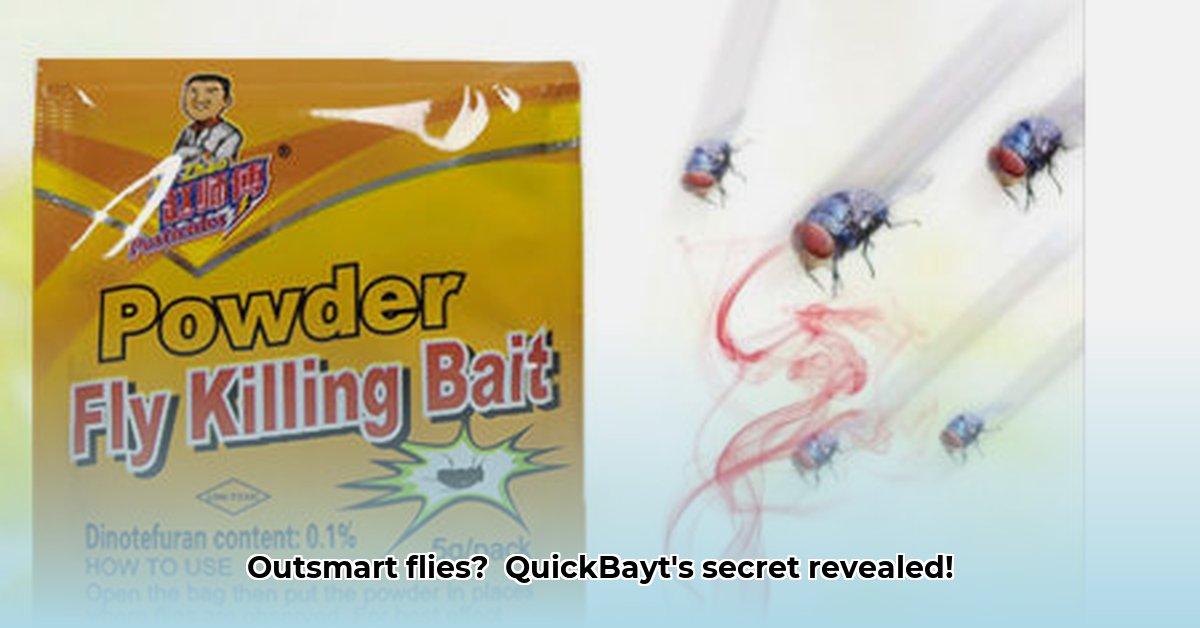
Dealing with persistent fly infestations is a major challenge for livestock farmers, impacting animal health, productivity, and overall profitability. QuickBayt fly bait, readily available at Tractor Supply, promises a potent solution. But how effective is it, and does its use align with sustainable agricultural practices? This in-depth review examines QuickBayt's efficacy, environmental impact, and its role within a comprehensive Integrated Pest Management (IPM) strategy. For broader pest control options, check out these other effective solutions.
QuickBayt: Product Overview and Application
QuickBayt fly bait 1 combines imidacloprid, a neonicotinoid insecticide (a class of neurotoxic chemicals), with Z-9-tricosene, a pheromone that attracts flies. This dual-action approach aims to lure flies into contact with the insecticide, resulting in rapid mortality. The manufacturer claims effectiveness lasting up to four weeks per application, although this duration can fluctuate based on environmental conditions and fly pressure. Application methods are versatile, including sprinkling, bait stations, or painting onto surfaces commonly frequented by flies.
Efficacy Analysis: A Balanced Perspective
Numerous farmers report significant reductions in fly populations following QuickBayt application, particularly against insecticide-resistant strains. The rapid knockdown effect is a major advantage. However, relying solely on QuickBayt presents challenges. Sustained use may increase the risk of imidacloprid resistance development among fly populations, reducing the bait's long-term efficacy. Complete eradication isn't guaranteed, and re-application might be necessary depending on the infestation's severity and regional fly pressure.
Environmental Impact and Sustainability
Imidacloprid, QuickBayt's active ingredient, raises significant environmental concerns. Research indicates potential harm to non-target beneficial insects, including pollinators like bees [cite relevant peer-reviewed study here]. Water contamination is another potential risk [cite relevant study here], posing threats to aquatic life. The long-term ecological consequences of imidacloprid usage warrant careful consideration, highlighting the need for responsible and limited application.
“While the immediate impact of QuickBayt is undeniable, we must consider the broader ecological implications of neonicotinoid use,” says Dr. Emily Carter, Entomologist at the University of California, Davis. “Sustainable agriculture requires a balanced approach that prioritizes long-term environmental health.”
Integrated Pest Management (IPM): A Sustainable Approach
A holistic IPM strategy minimizes pesticide dependence by combining several complementary methods. QuickBayt can play a role, but it’s most effective as one component of a broader plan:
Enhanced Sanitation: Maintaining clean livestock areas by regularly removing manure, spilled feed, and other organic waste disrupts fly breeding cycles. This fundamental step reduces initial fly populations drastically.
Strategic Manure Management: Effective manure management—composting, anaerobic digestion, or appropriate spreading techniques—minimizes attractive breeding grounds.
Biological Control: Integrating natural predators such as birds or beneficial insects can reduce fly populations naturally, reducing reliance on chemical pesticides.
Targeted QuickBayt Application: Use QuickBayt strategically in areas with highest fly activity, minimizing unnecessary pesticide application and environmental impact.
Continuous Monitoring: Regularly assess fly populations to adjust your IPM strategy based on observed changes, ensuring effectiveness over time.
Regulatory Compliance: Knowing the Rules
Before using QuickBayt, consult and strictly adhere to all relevant federal, state, and local regulations concerning imidacloprid use. Always carefully read and follow the product label instructions to ensure safe and responsible application. Failure to comply with regulations can result in penalties and environmental damage.
Conclusion: The Importance of a Balanced Approach
QuickBayt, while effective in providing immediate fly control, carries inherent environmental risks associated with imidacloprid. Sustainable livestock farming demands a comprehensive approach, integrating QuickBayt into a broader IPM strategy that prioritizes sanitation, manure management, and biological control methods. By combining QuickBayt with preventative strategies, farmers can effectively manage fly populations while minimizing the environmental impact, safeguarding both animal health and the environment. Further research into environmentally friendlier fly control alternatives is ongoing and should be encouraged. The responsible application of QuickBayt within a multifaceted IPM approach allows for a balance between effective pest control and sustainable agricultural practices.